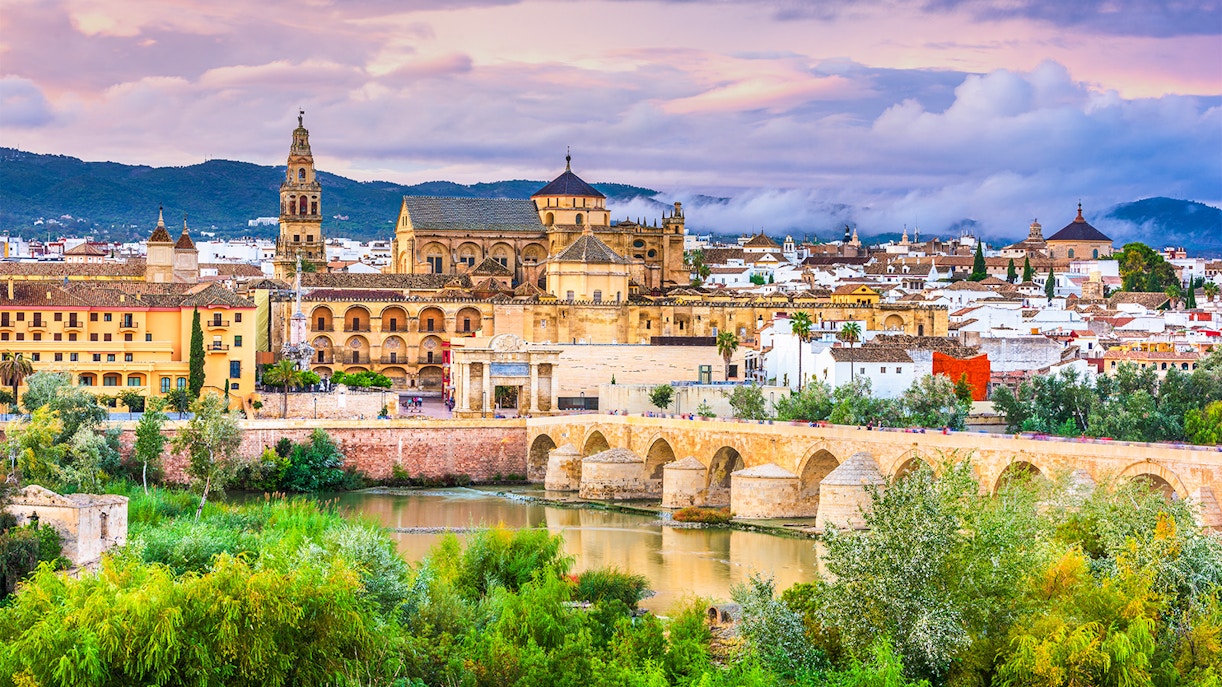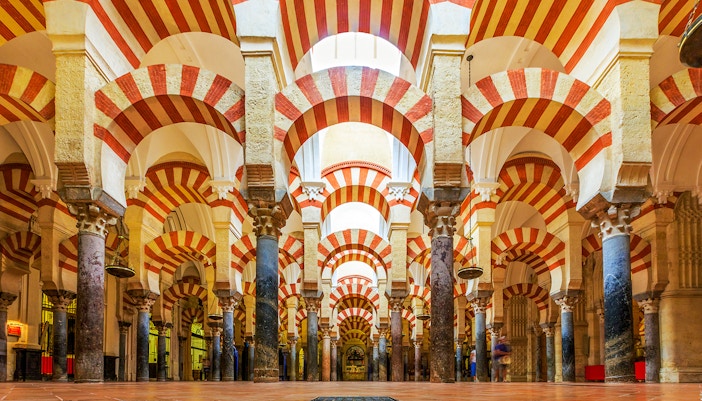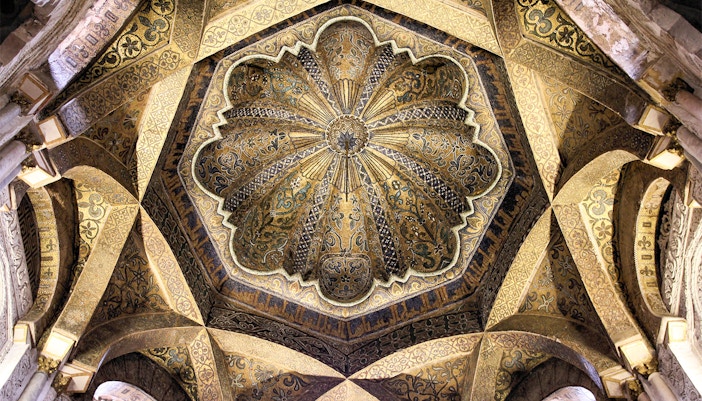The exterior of the Cordoba Mosque has a fortified appearance, exhibiting a defensive design by using alternating headers and stretchers, a Roman construction method to strengthen walls. The exterior also features heavy buttressing and a crenellated roof, which give the impression of a secure stronghold, further contributing to its fortified look. These fortifications may have been influenced by the uprisings and intrigues faced during Umayyad rule in Cordoba.





















